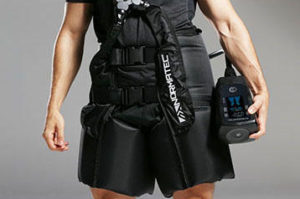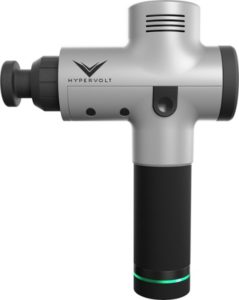by Mitch Hauschildt, MA, ATC, CSCS
Hip pain has haunted a lot of us in our career. It certainly isn’t of my favorite thing to deal with. Hip pain can be complex and difficult to trace to the source of the problem. They can be either mobility or motor control related, or a combination of the two. They can originate in the hip itself, in the case of Femoral Acetabular Impingement (FAI) or Labral Tears, or can be related to low back pathologies or other areas of the body. Sometimes hip pain is as simple as increasing trunk stability to improve pelvic control. Many times it is much more complex than that.
One of my current challenging patients is a young tennis player who had her first hip surgery in 2012 when she was barely a teenager. Since then, she has had another, an injection and lots of physical therapy to keep her on the court and achieving all of the goals that she has for her college career. All of this has happened before the age of 20. For the most part, she has done very well given the extensive trauma that she has had on that hip. What frustrates me is that we can get her pain free and feeling good with manual techniques and exercise, but they don’t seem to stick as well as I would like. They only last a day or two on average.
This morning I had an interesting conversation with our orthopedic surgeon that handles our hip patients. He raised an interesting point to me that I was unaware of. He said that in 2012 when she had her first surgery, surgeons weren’t aware that they needed to close the joint capsule after a hip labral repair procedure. So, there is a pretty good possibility that she is experiencing some shifting in her hip because her joint capsule has never been fully repaired. Assuming that this is true, she has a stability problem. Based on what I know about her physical abilities, it makes a lot of sense and matches up well with her symptoms and abilities.
One thing that makes a lot of hip patients a challenge is understanding who has a stability problem and who has a mobility problem. One trick that I learned a few years ago to help me with my evaluation from my good friend Adam Wolf is to combine some manual muscle testing with some compression and distraction to see what works best for them. Basically, the idea is to use an objective marker like a manual muscle test (i.e. hip flexion) that demonstrates pain and/or strength within that hip. Start by testing the chosen objective market to set your baseline. Then, quickly distract the hip by pulling on the straigh leg. Then, retest to see if it is better, worse or the same. If it is better, then it is indicative of a hip that desires mobility. That hip enjoys space in and around it. That individual needs to be stretched, distracted, and/or mobilized.
If distraction doesn’t improve the objective marker, then you want to try to compress the joint. Keeping the leg straight, bump the bottom of the heel a few times to send a compression force up the chain and into the hip. Then retest. If this makes their hip feel better, then they have a hip that needs more stability and motor control. Mobilizing this hip will only make things worse. This individual needs stability training and usually benefits from loaded, weight bearing activities. These are the people that I’m focusing on for the rest of this post.
The hip that needs stability usually likes compression. That can come in the form of weight bearing, axial loads through the hip joint itself. Or, it can also come in the form of other types of compression, which can be a great way to down regulate an inflamed, painful hip that desires stability.
This concept relies on the idea that by feeding the sensory system via the skin, we can make the brain feel safe and comfortable. It is the same idea that special needs therapists use with weighted blankets and vests to calm autistic children when they are distressed. Another example is the storm jackets that people use with their animals to calm them during storms and other times of anxiety.
What are the best ways to do this with the hip? I have 3 strategies that are working well for me.
- Normatec. Most people think of the Normatec
 system as strictly a recovery tool. While it is
system as strictly a recovery tool. While it is
good for recovery, I am finding that it is a great tool
or decreasing pain and improving stability with my hip patients. You do need to have the hip attachment for the Normatec to make this work and it is a it of a high tech solution. But, if you have access to a Normatec, try using it with your hip patients for pain and stability training.
- Percussion Massage: A bit of a lower tech solution than the Normatec, but this still requires an investment. I’m a big fan of the Hypervolt because of its settings, quietness and battery life. But, there are other options out there. The goal here is to put them on their back with the leg straight and the knee locked out. Then use an aggressive setting on the bottom of the foot for 10-30 seconds. The idea is to send a vibratory compression force through the leg and into the hip. Some people will need more time or reps than others, but this can be a nice tool for reducing pain and increasing safety in the mind’s eye at the hip.
- Floss Band: This is a great technique because it is cheap,
 easy, reproducible and very mobile. Simply perform a hip spica with the floss band and have them move through some sort of a range of motion. Because it is a large and deep joint, you will need to use quite a bit of stretch on the band to give a lot of compression. I also encourage you to put your ‘X’ where they are having their symptoms. If they have anterior hip pain, put the ‘X’ over the front of the hip as you alternate above and below. If it is lateral hip pain, go over the outside, and so on.
easy, reproducible and very mobile. Simply perform a hip spica with the floss band and have them move through some sort of a range of motion. Because it is a large and deep joint, you will need to use quite a bit of stretch on the band to give a lot of compression. I also encourage you to put your ‘X’ where they are having their symptoms. If they have anterior hip pain, put the ‘X’ over the front of the hip as you alternate above and below. If it is lateral hip pain, go over the outside, and so on.
None of these are perfect and some will work better than others for certain people. The overall idea is to identify the unstable hips (even if it is micro instability) and open your training window by using compression to your advantage.


Love the info and am always looking for better techniques to use .